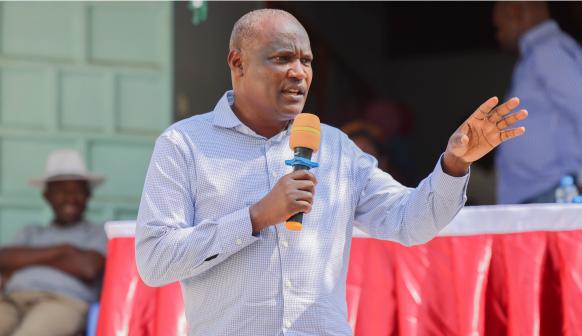Kenya’s total public debt has climbed to Sh11.81 trillion, representing 67.8 per cent of the nation’s Gross Domestic Product (GDP) as of June 2025, Treasury Cabinet Secretary John Mbadi has disclosed.
During a briefing with financial reporters on Tuesday, Mbadi explained that Sh6.33 trillion is domestic debt while Sh5.48 trillion is owed to external lenders, including the World Bank, African Development Bank, China, and Eurobond investors.
In terms of present value, the debt equals 63.7 per cent of GDP. Mbadi described this level as sustainable but warned that it comes with an increased risk of fiscal pressure. In the 2024/25 financial year, Kenya spent Sh1.72 trillion on debt servicing, with Sh1.14 trillion going to domestic lenders and Sh579 billion to foreign creditors.
To reduce these vulnerabilities, the Treasury has introduced several liability management strategies. These include refinancing high-interest obligations, lengthening debt maturities, and increasing the share of concessional financing in total borrowing.
“Sound and prudent debt management remains the central pillar of my stewardship at the National Treasury, anchored on safeguarding essential public services, restoring fiscal space to spur growth and fortifying Kenya’s economic sovereignty,” Mbadi said.
Under the 2025 Medium-Term Debt Management Strategy, the government seeks to improve the debt structure by extending maturities, controlling exposure to interest rate and currency fluctuations, and ensuring fairness for future generations. Mbadi noted that 75 per cent of new borrowing will come from local sources, while 25 per cent will be sourced externally.
Rising global and local interest rates have pushed up the cost of debt service, with interest payments for the 2025/26 fiscal year projected to exceed Sh1 trillion. Despite this, Mbadi affirmed that Kenya will continue to meet all debt obligations on schedule.
“We are implementing a robust strategy that guarantees Kenya meets its debt obligations without compromising critical public services,” he said.
The Treasury aims to reduce public debt to 55 per cent of GDP by 2028. This plan involves managing maturing Eurobonds, slowing costly commercial loans, and pursuing debt-for-development swaps. Kenya also plans to diversify funding by tapping Asian and Middle Eastern bond markets while prioritising concessional loans from bilateral and multilateral institutions.
Mbadi confirmed that the government is engaging the International Monetary Fund (IMF) on a new funded programme designed to secure affordable financing and strengthen fiscal oversight. Discussions began in September 2025, led by IMF Mission Chief Haimanot Teferra.
“We are not engaging the IMF because we are in crisis, but because we want to move towards an investment-grade credit rating that will reduce our future borrowing costs,” he said.
He highlighted that as an IMF and World Bank member, Kenya contributes annual subscriptions and should benefit from concessional loans and technical assistance.
“You also need someone to continuously engage with you, to look at you and tell you that we think you are losing track,” Mbadi added.
Addressing public concerns about IMF conditions, the Treasury chief assured Kenyans that ordinary citizens would not be affected.
“I guarantee that the conditions we agree with the IMF are not putting pressure on ordinary Kenyans, but instead helping them receive better services,” he said.
The IMF, which concluded Kenya’s 2021 Extended Credit Facility and Extended Fund Facility in March 2025, remains committed to supporting fiscal stability and economic reforms.
To enhance transparency, the Treasury will hold monthly briefings with financial journalists, promoting public understanding of debt trends and economic policy.
“We will be holding monthly engagements with financial journalists to strengthen fiscal transparency and promote a well-informed public discourse on Kenya’s debt and economic trajectory,” Mbadi said.
